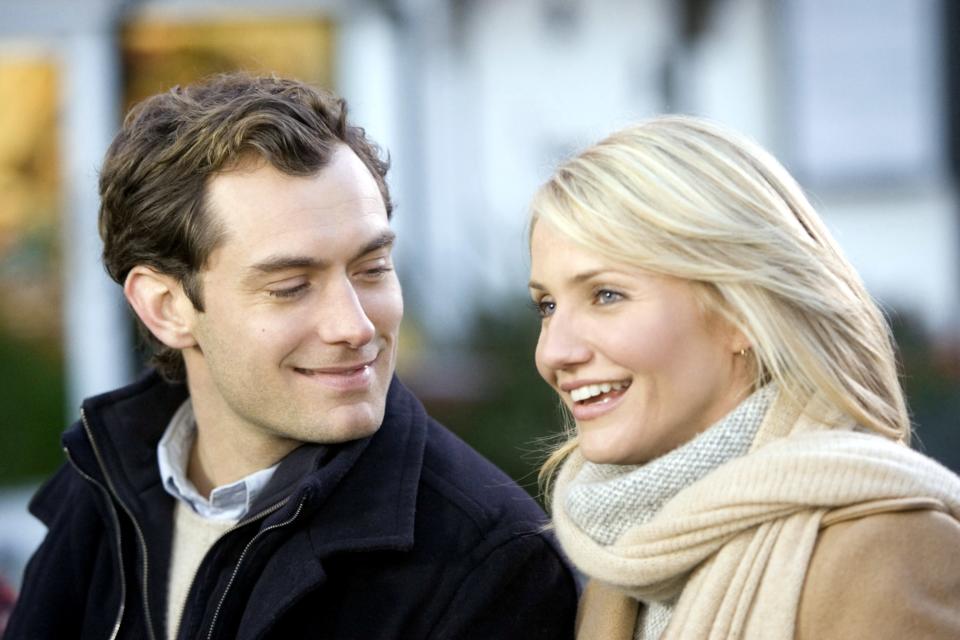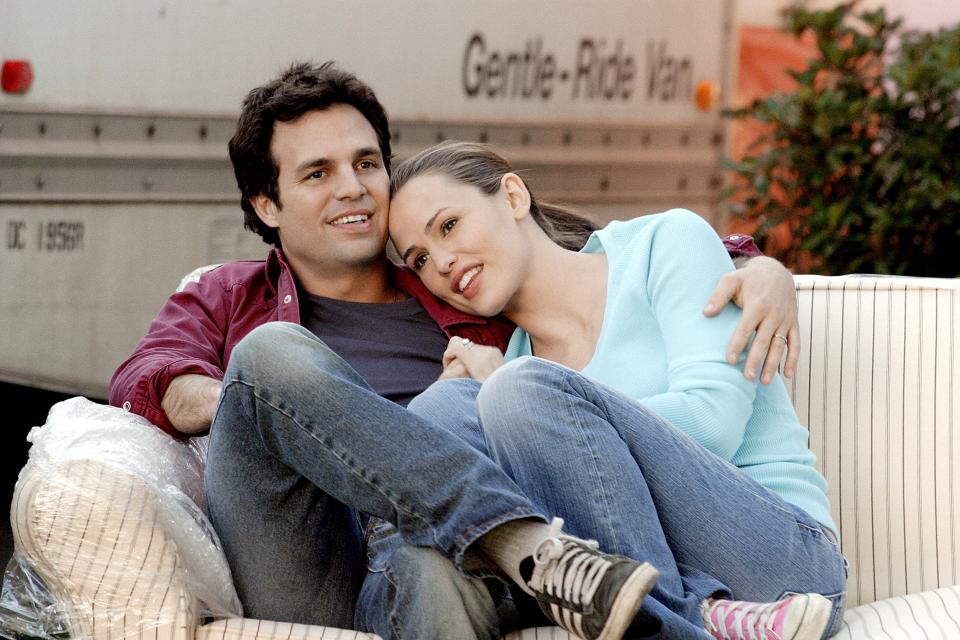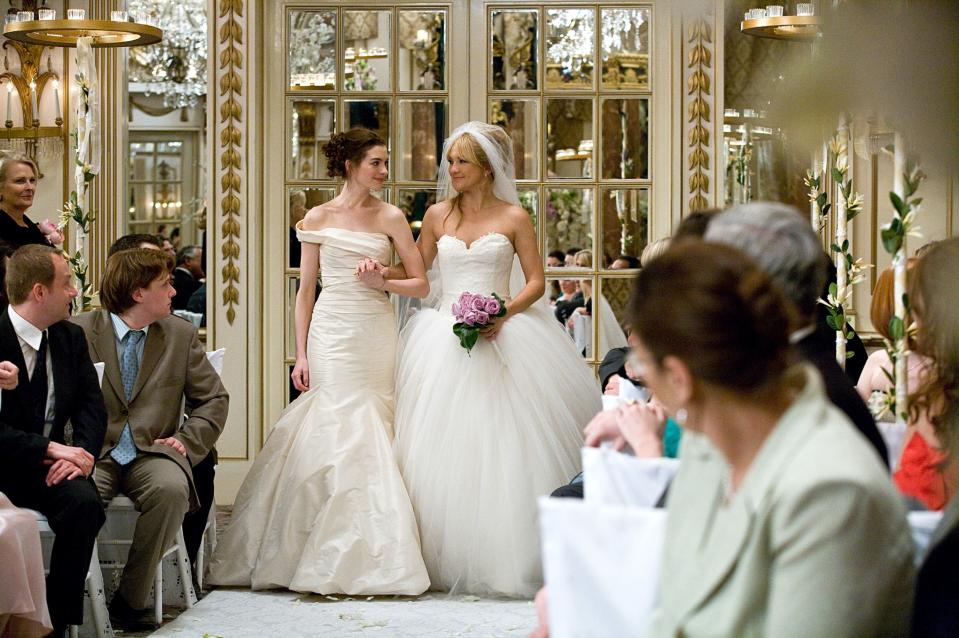The Wild Stories Behind Casting Your Favorite Rom-Coms

The one thing all romantic comedies have in common? They celebrate the two things everyone wants in life—rom and com, of course. To honor that, we're devoting a whole week to the genre. More on the rom-coms we love, past and present, here.
When Nancy Meyers wrote The Holiday—which she also directed—she apparently did so with certain actors in mind. “It was a nightmare [for me],” Jane Jenkins, who cast the movie, tells Glamour. The main problem: Hugh Grant, who Jenkins says Meyers imagined in the part of Graham, passed. “He said, ‘No, thank you very much,’” Jenkins remembers. “‘I can’t do another rom-com.’”
The search to replace him proved difficult. “You name a British guy, and we saw him,” Jenkins, who also cast When Harry Met Sally, says. “Nancy wrote so specifically, to the timbre of Hugh’s voice, that actors would come in and read for the part but weren’t delivering the lines in the [same] way. It was exhausting.”
Daniel Craig was among the many men to audition. “It was one of my greatest moments in my whole life," Jenkins recalls, "because I read with him and he gave me a big hug at the end of the reading. I was literally swooning.” The rest of the room didn't share her response, even after Jenkins told them she had it on good authority that Craig would likely be the next James Bond (she was friends with the producer of the Bond franchise).
The role in The Holiday eventually went to Jude Law. He’d worked with Meyers’s ex-husband, Charles Shyer, on Alfie; and according to Jenkins, Meyers wasn't sold on the actor at first. “At the end of the day, when we still had no one...I said, ‘Well, there is still Jude Law.’ And he was fabulous in the movie.”

THE HOLIDAY, Jude Law, Cameron Diaz, 2006. ©Columbia Pictures/courtesy Everett Collection
It’s hard to imagine your favorite romantic comedies starring different actors. When Harry Met Sally without Meg Ryan and Billy Crystal? 10 Things I Hate About You without Julia Stiles and Heath Ledger? It’s a testament to quality acting, directing, and screenwriting that those thoughts alone feel wrong. But it’s also a testament to quality casting. Which raises the question: Aside from satisfying the requests of a visionary director like Meyers, what goes into casting a good rom-com? Here we find out.
Chemistry is key.
A rom-com works only if the audience is rooting for two people to get together against all odds. That means the actors playing those two people need to have a palpable connection onscreen. “If it’s not there, the audience knows, and the romantic aspect doesn’t work,” casting director Marcia Ross tells Glamour. “It completely undermines your movie.”
When casting Cher’s love interest, Josh, in Clueless, Ross tested multiple actors with Alicia Silverstone—including Jeremy Sisto, who went on to play Elton—before landing on Paul Rudd. “He grounded her; she made him sexier. It was so obvious when you watched them.”

CLUELESS, Paul Rudd, Alicia Silverstone, 1995
Jennifer Euston, who cast Bride Wars and Sleeping With Other People, similarly describes chemistry as something you feel in your gut. “You’re either like, ‘Ugh, this is horrible. These people would never be together,’ or, ‘I should leave the room, because this is a little too sexy and hot.’”
It's not just about looks, either.
That doesn’t necessarily mean the most conventionally “hot” actor who auditions will (or should) get the part. “There’s something about people that you’re either drawn to or not,” Ross says. When considering Ledger for 10 Things I Hate About You, she says she wasn’t taken by his Hollywood heartthrob appearance—he was, after all, an unknown Australian actor—but rather his overall vibe. “In person he had a lot of interesting sexual charisma, but I wouldn’t say he’s traditionally handsome,” she says. “He was sexy and not at all typical.”
Euston remembers working as an associate on 13 Going on 30 and admiring director Gary Winick’s choice of leading man Mark Ruffalo. “Casting Mark was daring at the time because he had done nothing to indicate he could do comedy or romance,” Euston says. “It was unconventional but worked beautifully.” It’s not lost on her that today’s rom-com staple, Noah Centineo, looks like he could be Ruffalo’s son. (“It’s sort of uncanny,” she says.)

13 GOING ON 30, Mark Ruffalo, Jennifer Garner, 2004, (c) Columbia/courtesy Everett Collection
It’s also not lost on her that Adam Driver, whom she cast in Girls, is now the internet’s collective boyfriend. “I couldn’t get Adam arrested by a studio,” she says. “I tried him for tons of stuff, and no studio or network would approve him because he wasn’t conventionally handsome. And I was like, ‘No, but he’s really handsome.’ He’s very sexy. He’s a marine.” It took Girls creator Lena Dunham agreeing with Euston—and HBO trusting their instincts—for Driver to get his break.
“When I cast a romantic comedy, I want it to look like a real person who has a sense of humor,” Euston says. “I want to cast a talented and smart actor. Unfortunately, they—you know, ‘they’—think if you have hot people in a romantic comedy, that’s going to make it a hit. And that’s not necessarily true.”
Navigating studio politics is part of the job.
It’s naive to think a studio movie would be cast without studio approval. In fact, movies usually require an audience-tested, box-office-approved actor to get made, period. (Which is one reason that big studios have stopped making as many rom-coms: The genre has stopped making as much money.) Bride Wars, for example, wasn’t put in motion until Kate Hudson was attached, and Euston didn’t start working on the movie until after Anne Hathaway was already on board as well.

BRIDE WARS, center, from left: Anne Hathaway, Kate Hudson, 2009. TM and ©copyright Fox 2000 Pictures
Even with that star wattage, when Euston tried to cast a then unknown Chris Pratt as Hathaway’s fiancé, she was met with resistance. “It was a little tricky getting him approved,” she says. “Because nobody knew who he was.” The studio also demanded that she audition June Diane Raphael and Casey Wilson, who wrote the screenplay, rather than just cast them. “I knew they could act,” Euston says. “I knew they didn’t have to audition for these small, essentially tiny, roles.”
Assembling a strong supporting cast is also crucial.
The quirky best friend or sidekick character can feel like a tired trope when done wrong. But when done right—Carrie Fisher in When Harry Met Sally or Judy Greer in anything—these characters can steal a movie. Same goes for the mean girl or romantic rival. “Those are so much more fun for an actor to play,” Euston says. “There’s so much more to bite into than with the swoony romantic lead.”
Ross describes casting these roles as similar to casting rom-com leads, only with different qualities in mind. When casting the villain, for example, “You’ll look at the headshot and go, ‘Do I want to punch this person? Does their mere presence aggravate me?’” From there, you bring them in to audition—and if you’re, say, Andrew Keegan, your apparently punchable face will get you cast in 10 Things I Hate About You.
Patti Greco is a writer based in New York.
A previous version of this post misquoted Nancy Meyers. The story has since been updated.
Originally Appeared on Glamour

